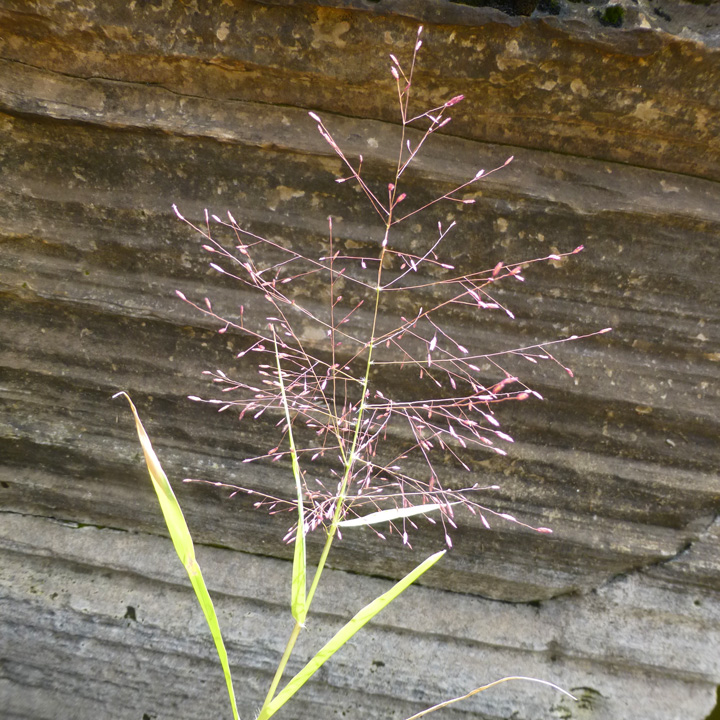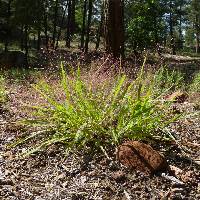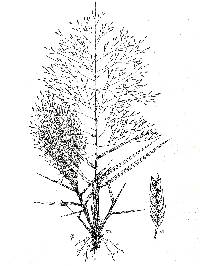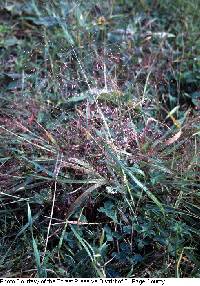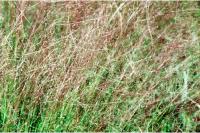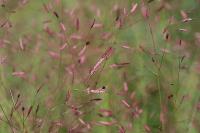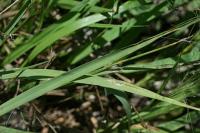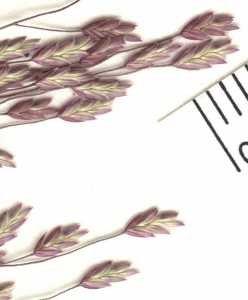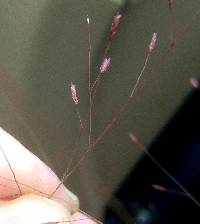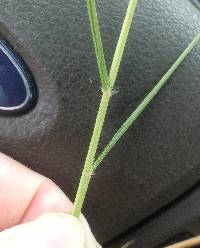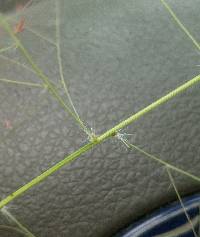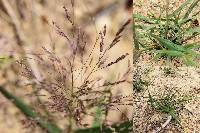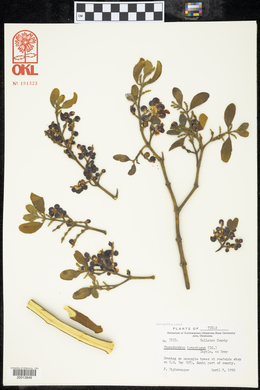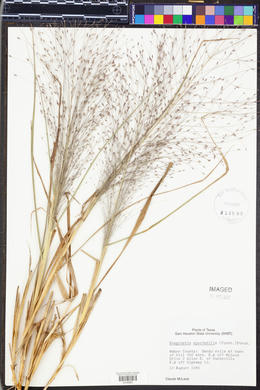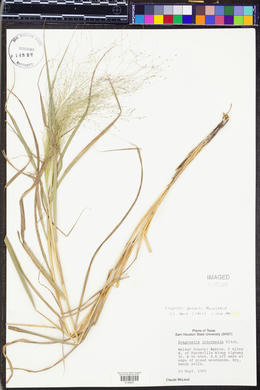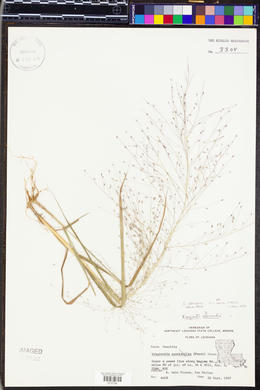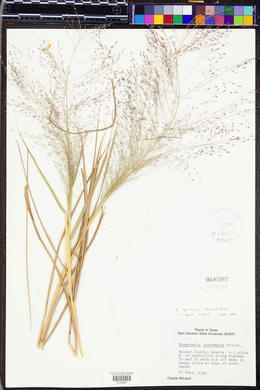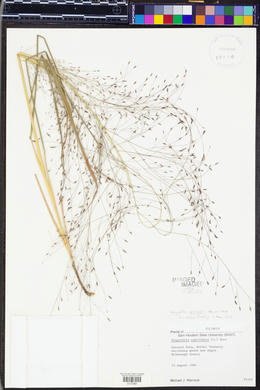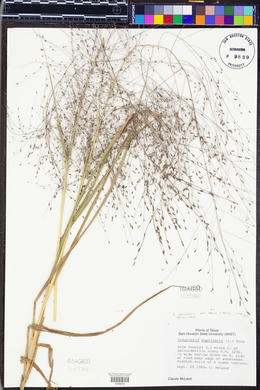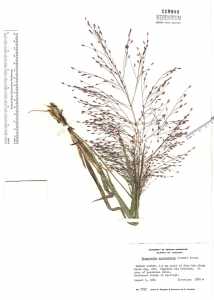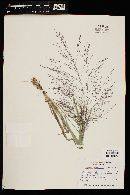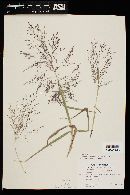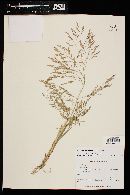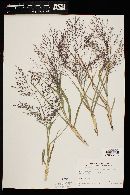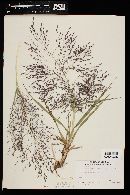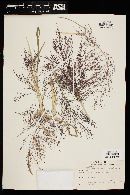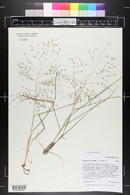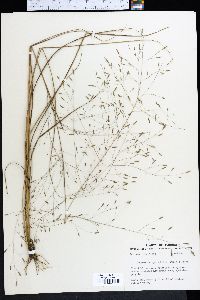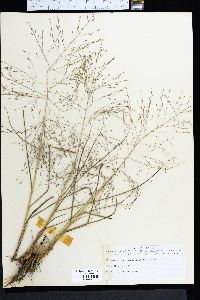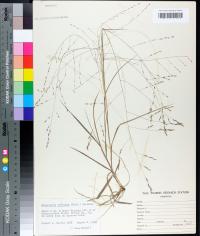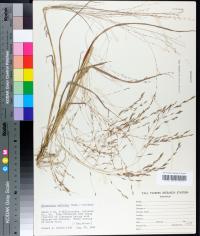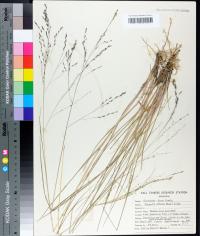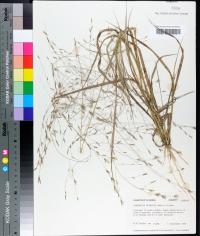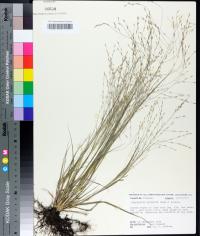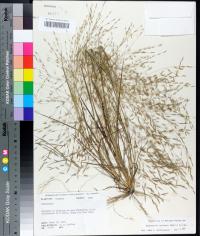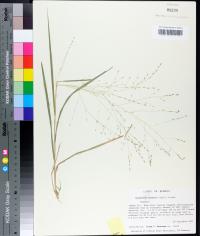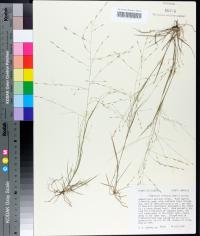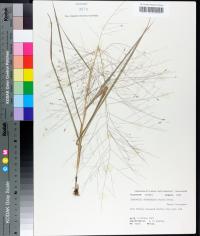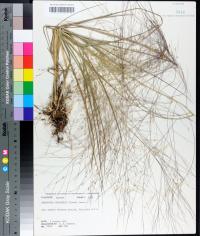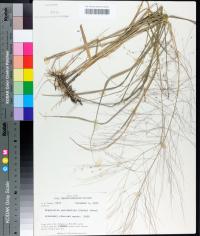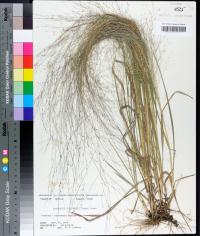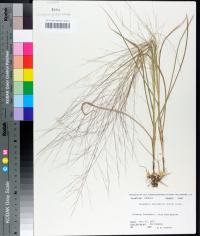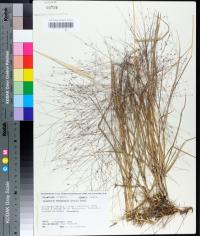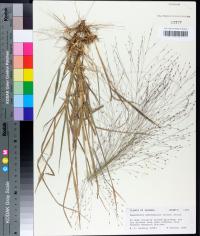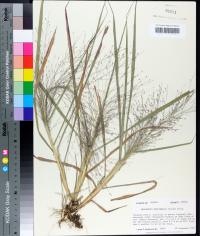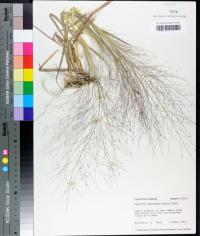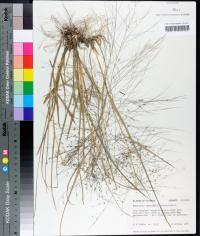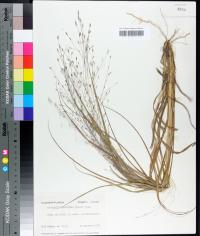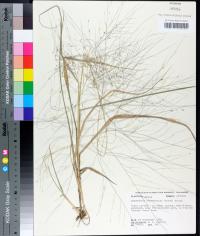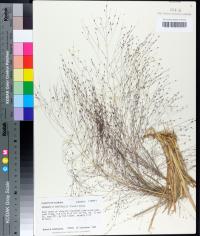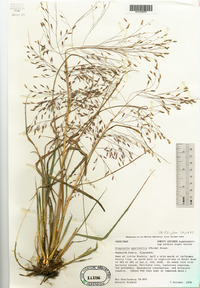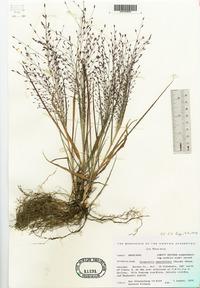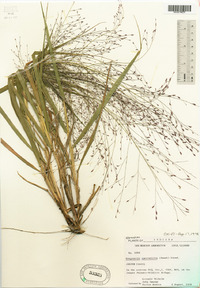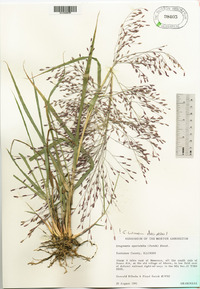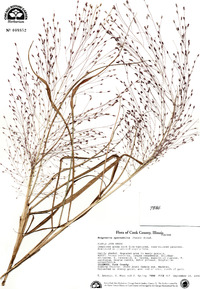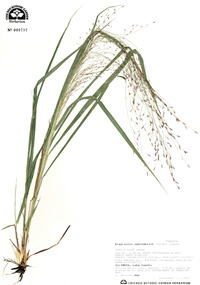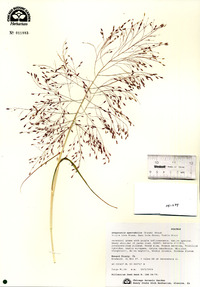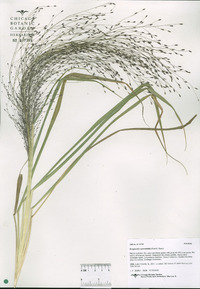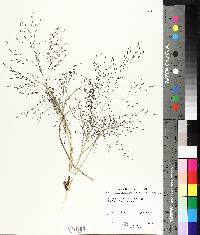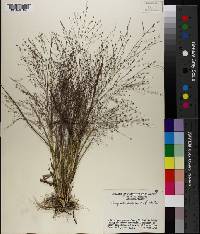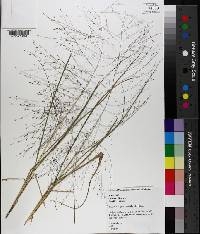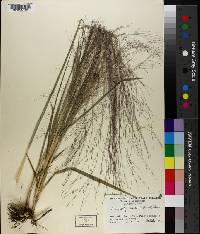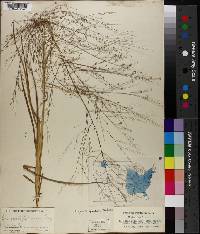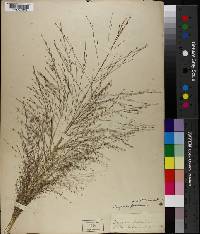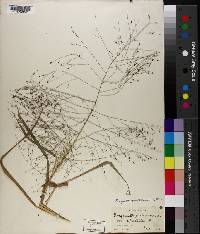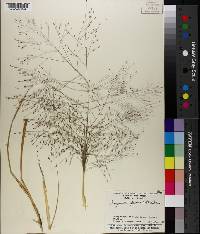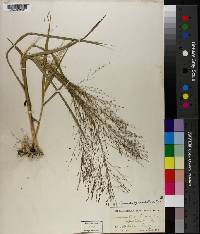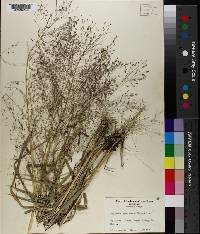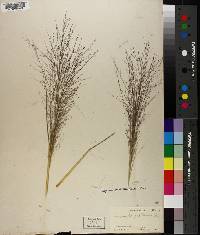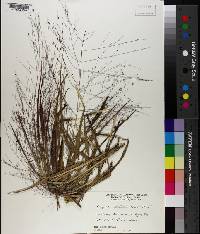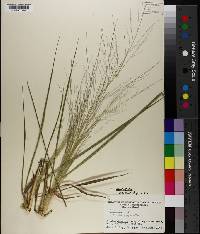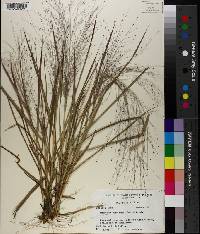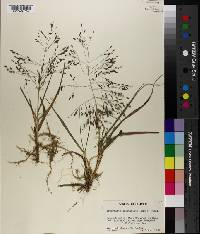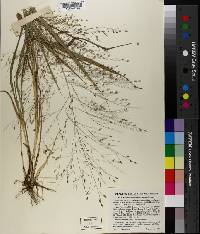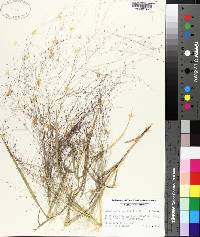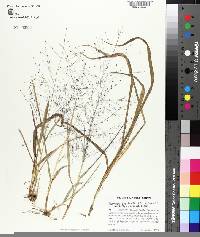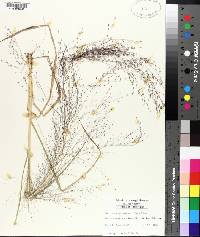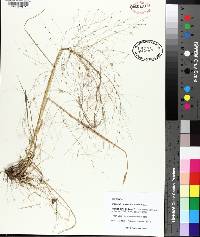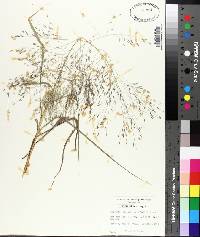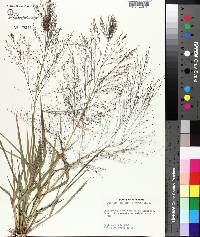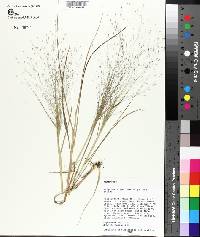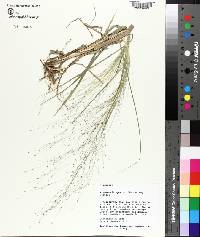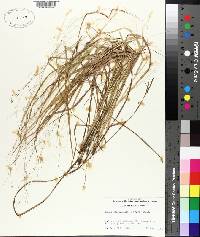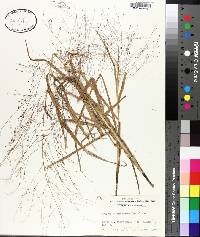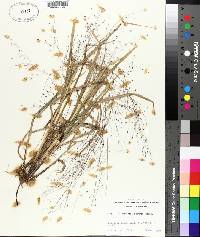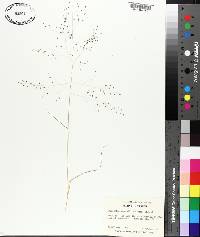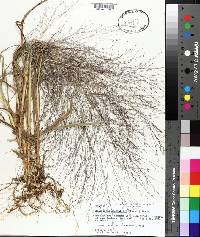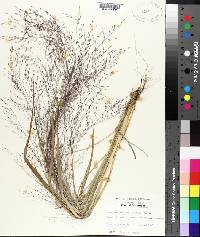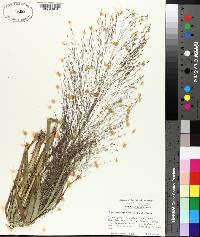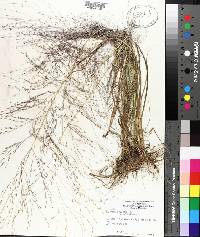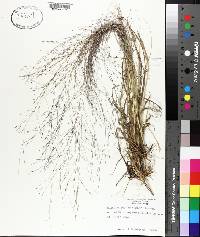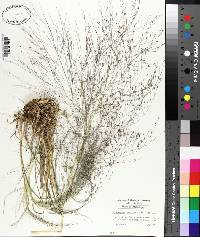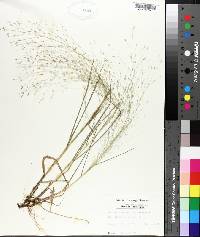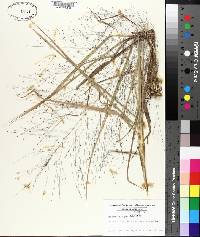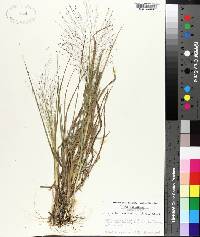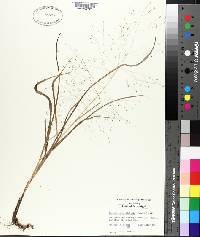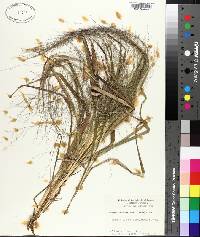Eragrostis spectabilis
|
|
|
|
Family: Poaceae
Petticoat-Climber, more...purple lovegrass, Aragrostide Brillante
[Eragrostis geyeri Steud., moreEragrostis pectinacea var. spectabilis , Eragrostis spectabilis var. sparsihirsuta Farw., Eragrostis spectabilis var. spectabilis (Pursh) Steud., Eragrostis velutina Schrad., Megastachya spectabilis (Pursh) Roem. & Schult., Poa hirsuta var. spectabilis (Pursh) Torr., Poa spectabilis Pursh] |
Plants perennial; cespitose, with innovations and short, knotty rhizomes less than 4 mm thick. Culms 30-70(85) cm, erect, glabrous. Sheaths hairy on the margins and at the apices, hairs to 7 mm; ligules 0.1-0.2 mm; blades 10-32 cm long, 3-8 mm wide, flat to involute, both surfaces usually pilose, sometimes glabrous on both surfaces or glabrous abaxially and sparsely pilose adaxially, often with a line of hairs behind the ligules, hairs to 8 mm. Panicles (15)25-45(60) cm long, 15-35 cm wide, broadly ovate to oblong, open, basal portions sometimes included in the uppermost leaf sheaths; primary branches (6)12-20 cm long, diverging 20-90° from the rachises, capillary, naked below; pulvini hairy, hairs to 6 mm; pedicels 1.5-17 mm, divergent or appressed. Spikelets 3-7.5 mm long, 1-2 mm wide, linear-lanceolate, reddish-purple, sometimes olivaceous, with (4)6-12 florets; disarticulation basipetal, glumes persistent. Glumes subequal to equal, (1)1.3-2.3 mm, lanceolate, membranous to chartaceous; lemmas (1)1.3-2.5 mm, ovate to lanceolate, leathery, 3-veined, apices acute; paleas (1)1.2-2.4 mm, membranous, keels sometimes shortly ciliate, apices obtuse to truncate; anthers 3, 0.3-0.5 mm, purplish. Caryopses 0.6-0.8 mm, ellipsoid, strongly flattened, adaxial surfaces with 2 prominent ridges separated by a groove, reddish-brown. 2n = 20, 40, 42. Eragrostis spectabilis is native in the eastern portion of the Flora region, extending from southern Canada through the United States, Mexico, and Central America to Belize. It grows in fields and on the margins of woods, along roadsides, and in other disturbed sites, usually in sandy to clay loam soils, at 0-1830 m, and is associated with hardwood forests, Prosopsis-Acacia grasslands, and shortgrass prairies. A showy species, E. spectabilis is available commercially for planting as an ornamental. Perennial tufted herb with knotty rhizomes 30 cm - 1.45 m long Leaves: with open sheaths that are hairy (to 7 mm long) along the margins and at the tip, and ligules 0.1 - 0.2 mm long. The blades are 10 - 32 cm long, 3 - 8 mm wide, flat or with margins rolling toward the upper surface of the midvein (involute), often softly hairy throughout (sometimes hairless) or hairless beneath and sparsely hairy above, and usually lined with hairs (to 8 mm long) behind the ligules. Inflorescence: terminal, branched (panicle), open, rising above upper leaves, 15 cm - 0.6 m long, 15 - 35 cm wide, broad egg-shaped to oblong with the base sometimes surrounded by a leaf sheath, with primary branches 6 - 20 cm long. Fruit: a reddish brown caryopsis, 0.6 - 0.8 mm long, elliptic and flattened, with one side having two ridges with a groove between them. Culm: 30 - 85 cm long, erect and hairless. Spikelets: on a 1.5 - 17 mm long stalk, reddish purple or sometimes olive, 3 - 7.5 mm long, 1 - 2 mm wide, narrow lance-shaped, laterally compressed. Glumes: equal or nearly so, 1 - 2.3 mm long, lance-shaped, membranous to thin but firm (chartaceous), single-veined, neither lobed nor awned. Florets: four to twelve per spikelet, with three purplish anthers 0.3 - 0.5 mm long. Lemma: 1 - 2.5 mm long, egg-shaped to lance-shaped with a pointed tip, leathery, usually hairless, three-veined. Palea: 1 - 2.4 mm long, membranous, with blunt to squared tips and two longitudinal ridges that occasionally have short hairs along the margins. Similar species: Eragrostis trichodes is the only other perennial Eragrostis species in the Chicago Region. It differs from Eragrostis spectabilis because it does not form rhizomes and the glumes (1.8 - 4 mm), anthers (1 - 1.6 mm), and caryopses (0.8 - 1.3 mm) are all longer. Flowering: mid June to early October Habitat and ecology: Common in sandy black oak savannas, old sandy fields, and artificially dry areas such as railroad ballast. Occurence in the Chicago region: native Etymology: Eragrostis is derived from the name of the Greek god of love, Eros, and agrostis, meaning grass. Spectabilis means showy. Author: The Morton Arboretum Tufted, erect or ascending perennial 3-6 dm; lvs firm or stiff, 3-8 mm wide, tapering to a fine point; infl diffuse, two-thirds as long as the whole shoot, its base usually included in the upper sheath, its scabrous branches rigid, divaricate, pilose in the axils; spikelets purple, 5-7 mm, 7-11-fld, most of the lateral ones shorter than their loosely ascending to spreading pedicels; first glume 1-2 mm; lemmas persistent on the eventually fragmenting rachilla, 1.6-2.1 mm, compressed, scabrous on the keel, the lateral veins evident; 2n=20, 40. Dry soil, fields, and open woods; Me. to N.D., s. to Fla. and Tex. (E. pectinacea, misapplied) Gleason, Henry A. & Cronquist, Arthur J. 1991. Manual of vascular plants of northeastern United States and adjacent Canada. lxxv + 910 pp. ©The New York Botanical Garden. All rights reserved. Used by permission. From Flora of Indiana (1940) by Charles C. Deam This species is frequent to rare in sandy to very sandy soils throughout the state and in hard, white clay soil in certain areas in the southern part of the state. It may be absent from a few counties of the Tipton Till Plain. ...... Indiana Coefficient of Conservatism: C = 3 Wetland Indicator Status: UPL Deam (1929): The panicle of this species breaks off easily at maturity, and it is a common thing to see great heaps of them piled by the wind against a fence. Hence, it is often called a "tumble-weed." |
|
|
|

